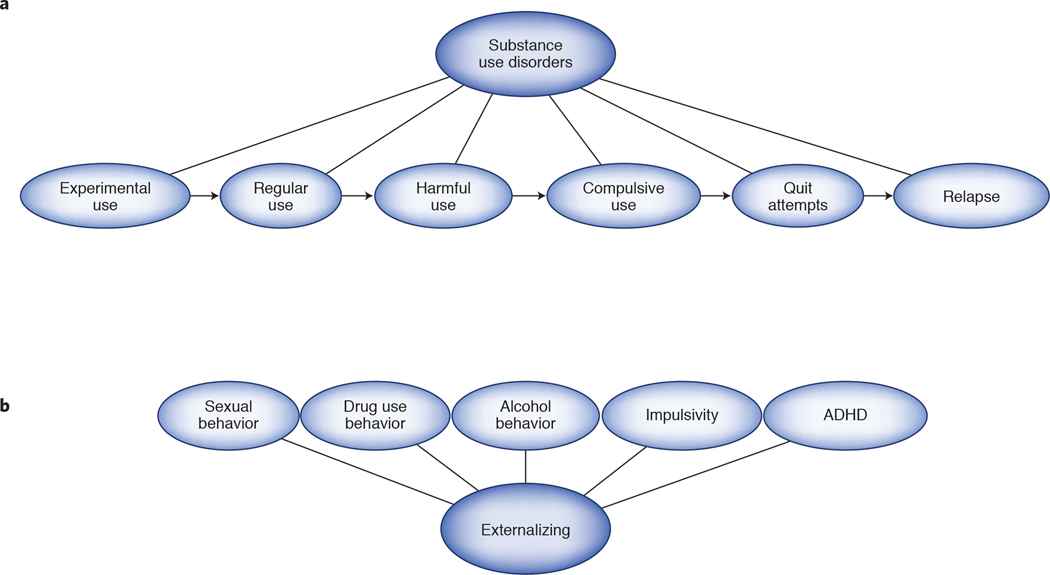Figure 3. Splitting vs clumping.
Psychiatric disorders can be further dissected or “split” into discrete units of analysis; for example, SUDs can be split into smaller, more biologically meaningful traits, that manifest into an obligate longitudinal pattern: drug experimentation → regular use → harmful use → transition to compulsive use → quit attempts → relapse. The empirical correlations among these traits can be examined (“clumping”) beyond those that are already defined by traditional psychiatric nosology. Recently, The Externalizing Consortium has sought to analyze the genetic correlations between different traits from the externalizing spectrum (https://osf.io/xkv36/), including sexual and drug-related phenotypes, impulsivity, and attention-deficit/hyperactivity disorder, with the goal of identifying loci involved in a shared underlying liability to externalizing versus genes unique to specific phenotypes.

